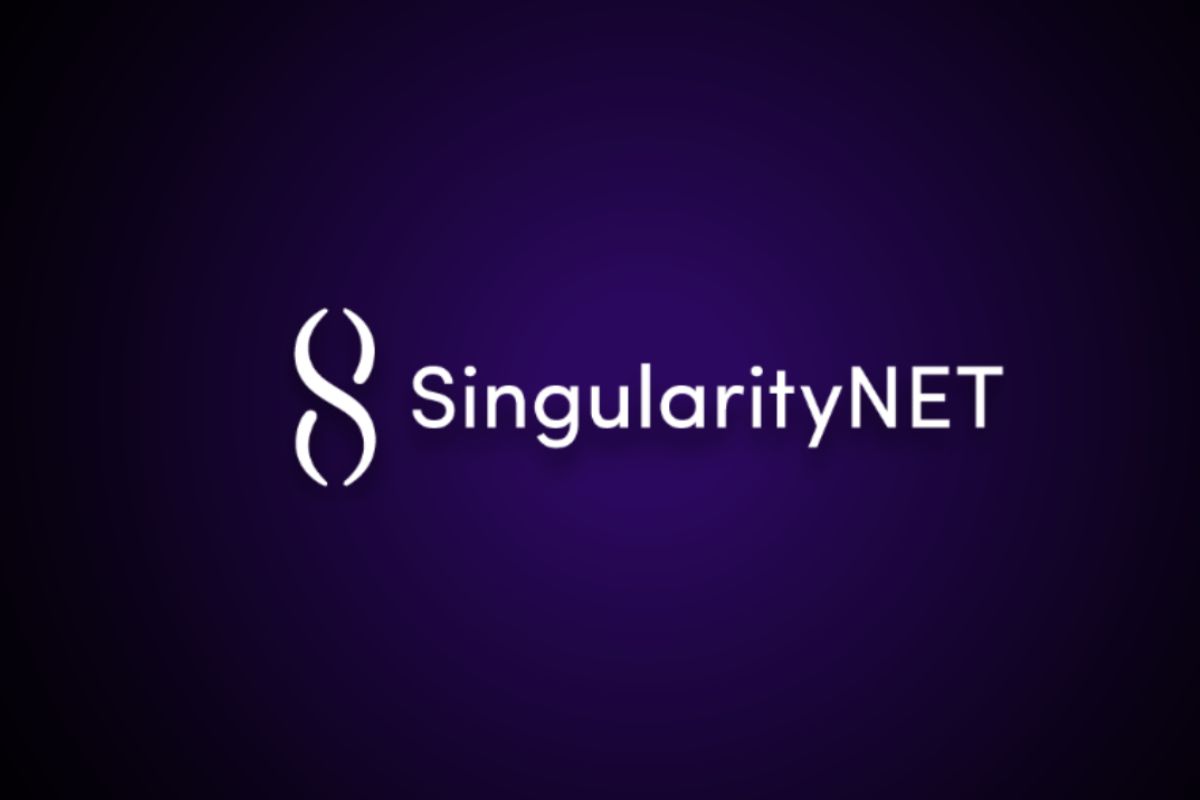Artificial intelligence isn’t slowing down. It’s picking up steam fast. And where does the trail lead? If SingularityNET has its way, straight to the holy grail: Artificial General Intelligence, or AGI. So, what’s new? A project so enormous, so packed with computing muscle, it reads like science fiction. But here’s the kicker: it’s already rolling out.
Inside SingularityNET’s Grand AGI Vision
SingularityNET, a global AI platform straddling the worlds of blockchain and decentralized computing, believes the next wave of AI can’t be built from siloed labs or single supercomputers. No, it’s going to take an entire network. Not just any network, either, but a mesh of supercomputers, distributed and interconnected, capable of training models bigger and smarter than we’ve ever seen.
Their plan? Use cutting-edge hardware and clever software to create what they call a “multi-level cognitive computing network.” This isn’t just tech jargon. It’s the actual backbone for the development and deployment of AGI. Let’s break down what that means.
AGI vs Today’s AI: What’s the Difference?
Most of us know AI for its party tricks, chatbots, image generators, and virtual assistants. These are examples of “narrow AI,” built for specific tasks. Impressive, sure, but not versatile. AGI is different. It’s the sort of intelligence that thrives across disciplines, learning, reasoning, and adapting. Think human-level (and potentially beyond), not just programmed to win at chess or churn out cat videos.
Where current systems rely on deep neural networks and massive datasets, AGI aims for something more general, instinctive, and self-improving, much like how we learn.
The Bottleneck: Why Supercomputers Matter
Here’s the problem that’s been plaguing AI researchers everywhere: computing power. Training sophisticated models, especially ones inching toward AGI, requires enormous resources. Think rows upon rows of Nvidia GPUs, AMD processors, and server racks humming twenty-four-seven. Even the top teams hit a wall.
SingularityNET’s answer? Don’t put all your eggs (or chips) in one basket. Instead, string together a global network, pooling idle and purpose-built computational muscle, thousands of nodes stretching across continents.
What Will This Supercomputer Network Look Like?
- Modular Design: The network isn’t a fixed monolith. It’s modular; new hardware and nodes can be added as needed, scaling with demand. This means expansion is relatively easy and upgrades are seamless.
- Hardware Highlights: The first generation of supercomputers taps Nvidia L40S GPUs, AMD Instinct and Genoa processors, Tenstorrent Wormhole server racks with next-gen Nvidia H200 GPUs, plus Blackwell GB200 systems. The best AI hardware out right now.
- Decentralized Approach: Instead of centralizing everything in one location, the network leverages distributed computing. Devices all around the world, from mega data centers to idle PCs, contribute cycles and storage. Resilience? Absolutely. Scalability? Built-in.
Timeline: When Is All This Happening?
Believe it or not, the first supercomputer in SingularityNET’s line-up is slated to come online in September 2024, with completion targeted by early 2025 (though supplier delays could shift things slightly). This phase will be a real-world test for the larger vision. Can this network deliver on its promise?
Strategic Partnerships: Decentralization With SingularityNET
To build such a vast, flexible infrastructure, SingularityNET has partnered with NuNet, a decentralized computing startup dedicated to pooling idle resources from thousands of devices globally. This alliance provides scalability, cost-efficiency, and protection against outages, as computations are dispersed among countless independent machines.
How SingularityNET’s Solution Shifts the Game
Here’s what sets their plan apart:
- Scalability: Need more power? Add more nodes. The architecture adapts and grows as demand increases, unlike most centralized systems.
- Cost-Efficiency: By unlocking existing idle computing resources, SingularityNET sidesteps the insane expense of building dedicated supercomputers from scratch.
- Resilience: With no single point of failure, the network shrugs off outages and hacker threats. Even if one node fails, many others pick up the slack.
- Democratization: Access isn’t limited to just big tech giants. Researchers everywhere, regardless of resources, can leverage the network. That opens doors for a broader spectrum of contributors to AGI research.
Key Technologies Involved
The backbone of SingularityNET’s AGI initiative rests on several state-of-the-art technologies:
- Deep Neural Networks (DNNs): These mimic the human brain’s learning and reasoning patterns.
- Large Language Models (LLMs): Like GPT-4, trained on massive datasets, powering everything from chatbots to translators.
- Multimodal Systems: These integrate inputs across different human behaviors, such as speech, gesture, image, and output rich, dynamic responses.
- OpenCog Hyperon: An open-source AI framework designed to accelerate AGI research through hybrid neural-symbolic computing, blending the strengths of both classic logic-based AI and neural networks.
Funding and Investment: $53 Million Upfront
Big projects have big price tags. SingularityNET has earmarked a whopping $53 million for its decentralized AGI and ASI (Artificial Superintelligence) supercomputer network. The lion’s share goes to hardware, data center modularization, and expanding the reach of decentralized AI research. Everything from Nvidia and AMD processors to custom server racks is on the shopping list.
Breaking Down the Phased Rollout
- Phase 1: By the end of 2024 or early 2025, the first modular supercomputer will go live.
- Global Access: Researchers worldwide will be able to tap into its resources through a tokenized system. This means both usage and contributions to training datasets are rewarded and tracked.
- Continuous Expansion: As more hardware comes online, the network’s computing capacity rises, making each new breakthrough faster and less resource-constrained.
How Will Researchers Actually Use This Network?
Simple: They’ll train large-scale AI models that would otherwise be impossible on traditional infrastructure, run resource-heavy simulations, and collaborate across borders as never before.
- Training Complex AI Models: The distributed network enables deep learning at a scale previously reserved for well-funded tech giants.
- Running Simulations: AGI research often demands running millions, sometimes billions, of iterative simulations. The network’s horsepower means these can happen much faster and at larger scales.
- Collaborative Innovation: Researchers from any country, with any background, can work together inside SingularityNET’s platform, sharing ideas, results, and datasets across the mesh.
Overcoming AGI’s Historic Barriers
For years, AGI progress stalled over two problems: computational bottleneck and lack of collaborative frameworks. By democratizing access and scaling resources horizontally, SingularityNET claims to break both deadlocks.
Funny thing is, these constraints didn’t just slow down innovation. They shaped the entire field; narrow AI flourished, while generalized intelligence remained stuck in theory. SingularityNET aims to redraw that map.
CEO Perspective: Ben Goertzel’s Remarks
Ben Goertzel, SingularityNET’s famously outspoken CEO, believes this initiative marks a “phase transition” for AI.
“The mission of the computing machine we are creating is to ensure a phase transition from learning on big data and subsequent reproduction of contexts … to non-imitative machine thinking based on multi-step reasoning algorithms and dynamic world modeling … a paradigmatic shift is taking place towards continuous learning, seamless generalization, and reflexive AI self-modification.”
Software Architecture: Open-Source and Tokenized Access
Alongside new hardware, SingularityNET is rolling out OpenCog Hyperon, an open-source framework tailored for AGI. Researchers will interact with it through a token-based system, giving transparent access controls and facilitating contributions of new datasets and algorithms.
Security and Resilience: Why Decentralization Is Key
- Outage Resistance: Decentralized architecture means that network disruptions or targeted attacks have minimal global impact.
- Better Fault Tolerance: Redundant nodes ensure that if one fails, computations continue without skipping a beat.
- Data Integrity: Tokenization means data contributions are tracked and attributed, improving trust.
Real-World Applications: Beyond Science Experiments
SingularityNET’s network isn’t just theoretical. The following real-world uses are already under consideration:

- Climate Modeling: Simulations on an unprecedented scale, integrating global datasets for disaster prediction.
- Health Diagnostics: AI algorithms parsing complex patient data to spot patterns missed by human doctors.
- Automated Legal Analysis: Reviewing millions of legal documents for cross-domain reasoning.
- Education: Personalized learning plans that adapt in real time based on student feedback.
- Creative Content Generation: New forms of music, art, and literature, produced by AGI models that learn from, and riff on, the world’s cultural output.
Global Collaboration: The Open Door to Researchers
Traditionally, supercomputer access was limited, reserved for elite universities, government teams, and top tech firms. Not anymore. SingularityNET plans to open the floodgates, giving researchers everywhere a shot to build, experiment, and launch next-generation AI.
- Global Pool of Knowledge: Geographic location and institutional affiliation matter less. Talent and curiosity matter more.
- Crowdsourced Breakthroughs: Unlikely alliances and perspectives from outside traditional centers of power drive discoveries.
Challenges and Controversies
Of course, not everyone is convinced. AGI itself remains a debated concept, technically, philosophically, and even ethically. Scientists worry about unforeseen consequences, control, and accountability. The sheer energy demands loom large. And there are privacy and data sovereignty questions, too.
SingularityNET claims its decentralized model addresses many vulnerabilities, but public trust is earned slowly.
Looking Forward: The Road to Superintelligence
While AGI is the stated goal, some in the field eye artificial superintelligence (ASI) , systems many orders smarter than humans. Here’s the real question: Will decentralized, modular computing put that leap within reach, or expose new risks?
For now, SingularityNET remains focused on AGI, plunging millions into infrastructure, software, and collaborative frameworks. The company’s reports detail progress on frameworks like OpenCog Hyperon and experiential projects, while keeping R&D open and unfenced.
SingularityNET’s Project at a Glance
- Foundation: Distributed mesh of supercomputers, powered by modular data centers.
- Tech Stack: Nvidia L40S GPUs, AMD Instinct and Genoa processors, Tenstorrent Wormhole racks, Nvidia GB200 Blackwell systems.
- Software Platform: OpenCog Hyperon, enabling persistent AGI research and collaborative experiments.
- Investment: $53 million (and counting), fueling hardware, global partnerships, and open-source software.
- Launch Timeline: First phase coming online by September 2024. Full-scale expansion targeted by early 2025.
- Research Access: Tokenized, decentralized, open to global contributors.
Final Thoughts: The Startup of a New Era?
Is this the “moment” AGI steps out of theory and into reality? Hard to say. But one thing’s clear: SingularityNET’s attempt to knit together the world’s computing power, to chase general intelligence, marks a pivot for both AI research and infrastructure sharing.
It’s ambitious. It’s risky. And, who knows: this bet on supercomputers could redraw the map for everything from AI safety to creative collaboration to human knowledge itself.
For now, the world watches as wires are plugged in, nodes fire up, and researchers get ready to put AGI through its paces, finally, together








